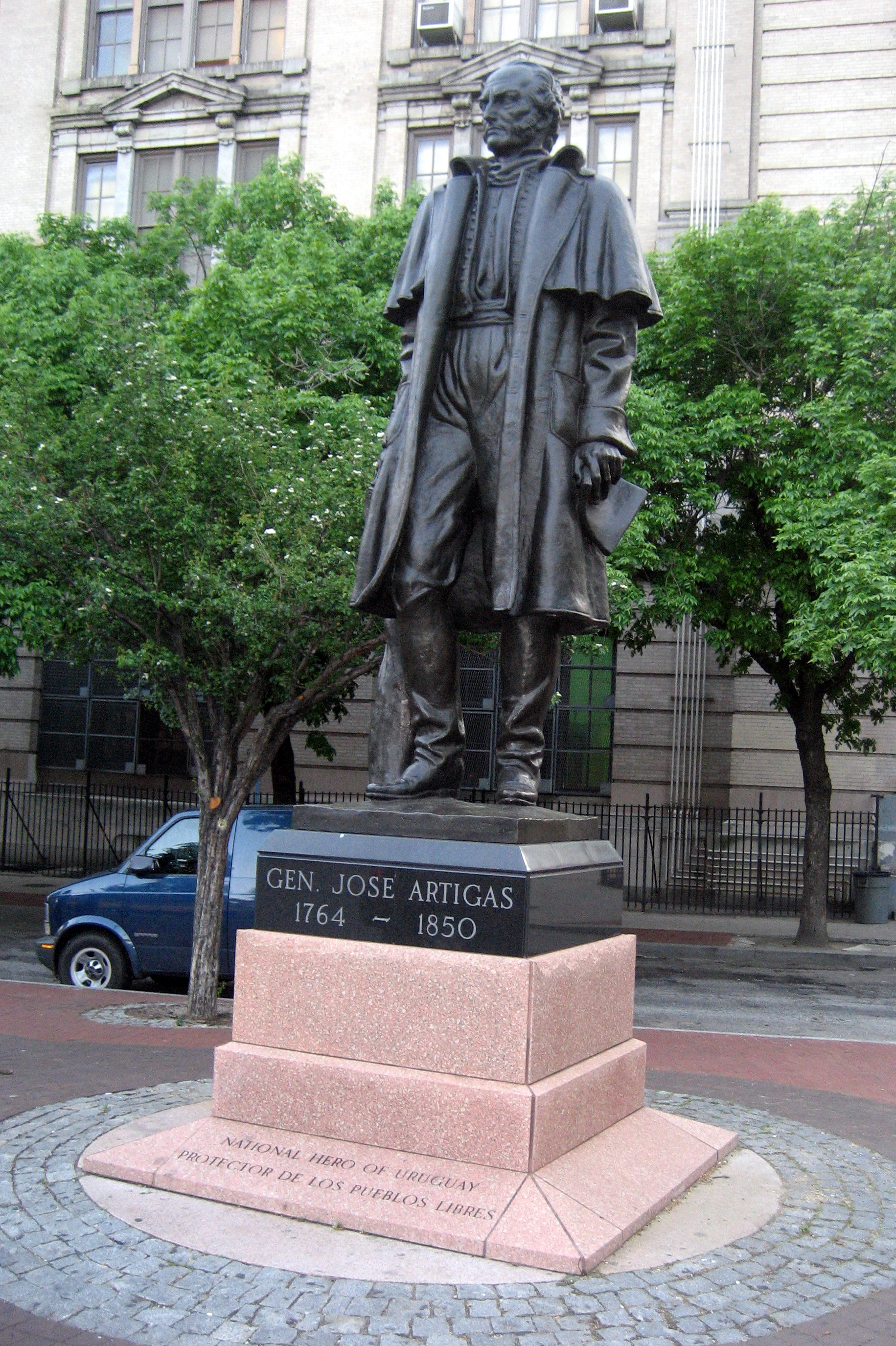Информация об изображении
Название: NYC - Hudson Square: General José Artigas statue The statue of the Uruguayan independence leader and national hero, General José Artigas (1764-1850), is one of a pantheon of six sculptures to Latin American leaders which overlook the Avenue of the Americas. They include Juan Pablo Duarte, considered the Father of the Dominican Republic, at Canal Street, and Brazilian independence leader José Bonidacio de Andrada e Silva in Bryant Park. Located on the Avenue at Central Park South are statues of the Cuban patriot, journalist, and poet, José Martí, Argentine General José de San Martín , and South American liberator Simón Bolívar. José Artigas was born on June 19, 1764 on the outskirts of Montevideo, then part of the Banda Oriental del Uruguay, in the Spanish Viceroyalty of the Río de la Plata. Artigas' parents were criollos, and his family were landowners; it was on their estates that at a young age he earned the respect and admiration of the gauchos for his courage and strong character. In 1797 he became military commander of the Cuerpo de Blandengues, a Spanish force charged with ridding the country of outlaws and smugglers. During the British invasions in 1805 and 1807, Artigas distinguished himself in the unsuccessful defense of the region. During the revolt of 1810, Artigas joined the patriotic Junta which attempted to liberate Montevideo from Spanish dominion. A new epoch began in 1811 when Artigas inspired thousands to withdraw in a mass exodus from their homeland to the west bank of the Uruguay River. The exodus gave Artigas the stature of a leader and he guided the revolutionaries in a ten-year crusade to liberate the people from Imperial Spanish rule. The first major revolutionary victory took place on May 18, 1811 in the Battle of Las Piedras, and Artigas was subsequently named “Chief of the Orientales.” Influenced by the principles of American leaders George Washington, Thomas Jefferson and Benjamin Franklin, Artigas established a provisional government in 1815 known as the Federal League. However, resurgent Portuguese forces brought about the demise of this democratic experiment. Artigas was forced to live in exile in Paraguay from 1820 until he died on September 23, 1850. The movement which Artigas inspired was eventually victorious; the First Republic of Uruguay was established on August 25, 1825. The larger-than-life statue of Artigas in Soho Square is a second cast of an original by José Luis Zorrilla de San Martín (1891-1975), which has stood in Montevideo, in front of the Uruguayan National Bank, since 1949. Zorrilla served as Director of the Uruguayan National Museum of Fine Arts, and was then considered his country’s outstanding sculptor. His father, Juan Zorrilla de San Martín, was both a poet and Uruguay’s Ambassador to Spain. This replica was fabricated by Vignali and Company, and placed on a Uruguayan granite base designed by architect Maria Cristina Caquías. Soho Square, in which the statue stands was one of several wedge-shaped public plazas created when Sixth Avenue was extended south of Carmine Street in the 1920s. The street was renamed Avenue of the Americas in 1945 at the suggestion of Mayor Fiorello H. LaGuardia, to honor Pan-American ideals and principles.Загружено: 18.04.2020 15:07
Просмотров: 59
Размер изображения: 1831×2750 пикселей
Камера: Canon PowerShot SD600
Изменение фото: 13.05.2007 19:42
Съёмка фото: 13.05.2007 19:42
Запись в память камеры: 13.05.2007 19:42
Фокусное расстояние: 5.8
Диафрагма: 2.8
Выдержка: 1/60
Вспышка: Использовалась
